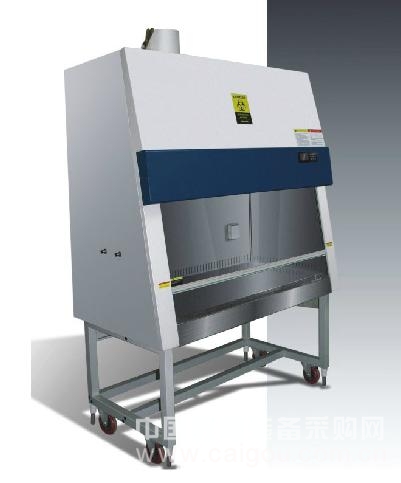
Shanghai Xinzhuang Instrument Co., Ltd. is committed to a business philosophy centered on technological innovation, continuously contributing to the advancement of social development through strategic and product innovations. As an integrated company specializing in R&D, manufacturing, and sales, we take pride in delivering high-quality products and exceptional service. We welcome all inquiries and look forward to serving you.
Biological safety cabinets are primarily used when handling pathogenic microorganisms such as bacteria, mold, or yeast. These cabinets maintain a negative pressure environment, ensuring that any airborne particles are filtered before being released. The exhaust system can be categorized into three types: 50% outflow, 75% outflow, and 100% outflow, depending on the level of protection required.
On the other hand, an ultra-clean workbench is designed for operations involving non-harmful bacteria, where the air is supplied under positive pressure. The airflow is filtered to maintain a local clean environment, typically achieving a class 100 cleanliness level. This makes it ideal for general laboratory tasks that do not involve infectious agents.
A clean bench essentially functions as a smaller, localized sterile space. It’s important to understand the key differences between a biosafety cabinet and a clean bench. A biosafety cabinet is specifically designed to protect the operator, the environment, and the sample when working with infectious materials like cultures, bacterial strains, or diagnostic specimens. It prevents exposure to harmful aerosols and potential spills during experiments.
The World Health Organization (WHO) highlights that biosafety cabinets play a critical role in reducing the risk of lab-acquired infections and cross-contamination due to aerosol exposure. They also help maintain a safe and controlled laboratory environment by filtering out harmful microbes.
Biosafety cabinets are classified into three main types based on the level of protection they provide: Class I, II, and III. Class I cabinets mainly protect the user and the environment, but not the sample. They operate similarly to fume hoods, with an HEPA filter at the exhaust port. However, since they lack an internal fan, they rely on external ventilation systems, which limits their use in many modern labs.
Class II biosafety cabinets are the most commonly used type today. According to the Chinese Pharmaceutical Industry Standard YY0569-2005, they are divided into four subtypes: A1, A2, B1, and B2. All of them offer protection to the operator, the environment, and the sample. Their design ensures a continuous flow of filtered air, making them ideal for a wide range of applications in research and medical settings.
Ultra-clean workbenches are known for their ease of use, efficiency, and comfort. They create a laminar airflow environment—either vertical or horizontal—that ensures a high level of cleanliness in the workspace. This makes them perfect for scientific research, pharmaceuticals, healthcare, and electronics. In industrial environments where large-scale vaccination or long hours of operation are required, these benches are a reliable choice.
These workbenches are powered by a three-phase motor, consuming around 145–260W of power. Air is drawn in through a "super filter" made of special microporous foam sheets, then expelled as a steady, dust-free, and sterile laminar airflow. This air removes particles larger than 0.3μm, including dust, fungi, and bacterial spores. The airflow speed ranges from 24 to 30 m/min, sufficient to prevent contamination without interfering with procedures like alcohol lamp disinfection.
Operators can perform sensitive tasks like cell transfer and inoculation under sterile conditions, ensuring the integrity of the samples. However, in the event of a power outage, the materials inside may become contaminated if exposed to unfiltered air. In such cases, it's advisable to stop work immediately, label the containers, and decide whether to discard or reprocess the material based on its stage of development.
At Shanghai Xinzhuang Instrument Co., Ltd., we are here to help. Our professional team is ready to answer your questions and guide you in choosing the right equipment for your needs. Contact us today to learn more about our products and services.
The rotating garden sphere is round and beautiful, and the glaze is bright, smooth and shiny. It is a very delicate decorative piece. ball Sphere For Garden Water Fountain and can also be used for garden, hotel or garden decoration. This ball is made with fine mold, professional machinery and hand work. To ensure that the shape is rounded and smooth at the same time to ensure its durability.
Garden Sphere,Garden Sphere Balls,Decorative Garden Balls,Ceramic Garden Balls
Yixing Bocai Pottery Co.,Ltd , https://www.bocaipottery.com